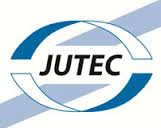EN 342 is a European standard that pertains to protective clothing designed to provide protection against cold environments. The title of the standard is “Protective clothing – Ensembles and garments for protection against cold.” It falls under the category of personal protective equipment (PPE) and is intended to ensure that protective clothing worn in cold conditions offers effective insulation and protection to the wearer.
EN 342 specifies the requirements and testing methods for clothing ensembles and garments that are designed to protect against cold weather and low temperatures. The standard aims to ensure that workers in cold environments are adequately protected from the hazards of cold stress, which can lead to discomfort, frostbite, and other cold-related injuries.
The main parameters covered by EN 342 include:
- Thermal Insulation: The clothing’s ability to provide thermal insulation is tested to ensure that it offers adequate protection against heat loss in cold conditions.
- Air Permeability: This parameter evaluates the clothing’s resistance to wind penetration, which is important to prevent wind chill and maintain warmth.
- Water Vapor Resistance: The standard assesses the clothing’s ability to allow water vapor (perspiration) to escape while preventing external moisture from entering. This is important to maintain comfort and prevent dampness.
- Optional Requirements: The standard also provides optional requirements for additional features such as reflective materials for visibility and protection against rain.
EN 342 categorizes protective clothing into different performance levels based on its ability to provide thermal protection against cold conditions. The clothing is assigned a two-digit code that indicates its thermal insulation and air permeability properties.
For example, the code “X2X” could represent a garment that offers intermediate thermal insulation, no requirements for air permeability (as indicated by “X”), and no optional rain protection.
As with any standard, it’s important to consult the latest version of EN 342 or any relevant updates to ensure accurate and up-to-date information, as standards can change over time.
 3M
3M Ansell
Ansell Dellta Plus
Dellta Plus Drager
Drager edelrid
edelrid Honeywell
Honeywell JUTEC
JUTEC lakeland
lakeland MSA
MSA New Pig
New Pig Weldas
Weldas